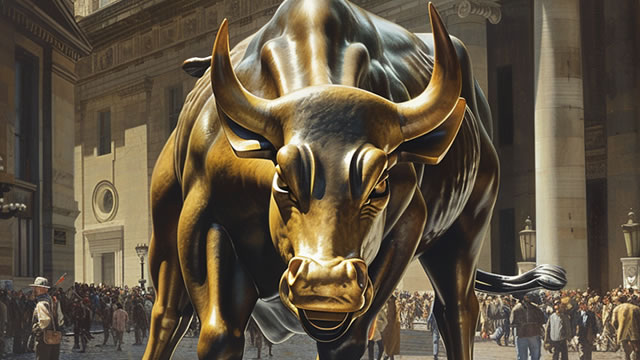The Tariff Tangle: A Curious Human’s Chat with an Artificial Intelligence Assistant
Once upon a time, in a world filled with endless streams of news and information, a curious human named Curious Carl sat before his trusty computer, pondering the latest economic announcement. With a furrowed brow and a quizzical expression, he asked his artificial intelligence assistant, AI-Fred, for some insights.
The Announcement: A New Tariff on the Horizon
Curious Carl: “AI-Fred, have you heard the latest about the new tariff announcement? Analysts are predicting some pretty dire consequences, aren’t they?”
AI-Fred: “Indeed, Curious Carl. The tariff in question is a significant one, and it has many experts voicing their concerns. The proposed tariff could potentially raise rates to levels not seen since the early 20th century, when the U.S. enacted the Smoot/Hawley Act.”
A Leap Back in Time: The Smoot/Hawley Act
Curious Carl: “Wow, that’s quite a leap back in time, isn’t it? What was the Smoot/Hawley Act all about?”
AI-Fred: “The Smoot/Hawley Act was a protectionist tariff act passed in the United States in 1930. Its primary goal was to protect American industries by raising import taxes on over 20,000 imported goods. While the act was intended to help domestic industries, it ultimately backfired and contributed to the worsening of the Great Depression.”
The Current Tariff: A Recession on the Horizon?
Curious Carl: “So, what does this mean for us now? Are we looking at a potential recession?”
AI-Fred: “Many analysts are expressing pessimistic views, with some even predicting an increased risk of a recession for the U.S. The tariff could lead to higher prices for consumers, potential job losses in industries that rely on imported goods, and trade tensions with other countries. However, it’s important to note that economic situations are complex, and there are many factors at play.”
Impact on Consumers
Curious Carl: “How will this affect me as a consumer?”
- Higher prices for goods: With increased tariffs, the cost of imported goods could rise, leading to higher prices for consumers.
- Job losses: Industries that rely on imported goods could be negatively impacted, potentially leading to job losses.
- Trade tensions: Trade tensions between countries could lead to further economic instability, which could impact consumers in various ways.
Impact on the World
Curious Carl: “And how about the rest of the world? What could be the potential consequences?”
- Retaliation: Other countries could potentially retaliate with their own tariffs, leading to a trade war.
- Global economic instability: Trade tensions and tariffs could lead to global economic instability and uncertainty.
- Impact on developing countries: Developing countries that rely heavily on exports could be particularly hard hit.
Conclusion: A Complex Economic Landscape
Curious Carl: “Well, AI-Fred, that’s certainly a complex economic landscape we’re navigating. I suppose all we can do is stay informed and hope for the best!”
AI-Fred: “Absolutely, Curious Carl. It’s essential to stay informed and remember that economic situations are complex and multifaceted. Let’s hope for a positive outcome!”
And with that, our curious human and his artificial intelligence assistant continued their journey through the world of news and information, always seeking to learn and understand the complexities of the world around them.





